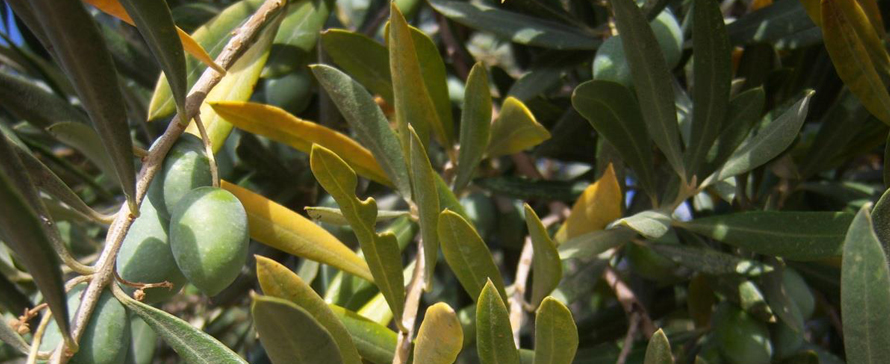Listen to this article
Calcium
Calcium is involved in various metabolic processes, and also has a high structural component in leaves and wood. It is passively absorbed from the soil in the transpiration stream. Therefore, in soils well supplied with calcium and humidity, and in a warm and dry atmosphere, there are usually no problems with calcium nutrition.
Lack of calcium is more common in acidic soils, mainly in cold and humid climates. With a radically poor level of calcium, growth is slowed down, and little fruit is set. On the tree you will note extreme senescence of mature leaves during the whole growth phase, which makes the tree look like it has suffered from repilo or lead repilo.
Foliar nutrition partially palliates the low leaf levels, helping metabolic processes where calcium is involved to function, thus avoiding the lack of fruit setting and premature senescence of adult leaves. Also when the olive tree is invigorated through pruning and fertilizers, and has greater radical and vegetative growth, along with more transpiration, even in acidic soils, without adding calcium, better calcium nutrition can be obtained.
Magnesium
Magnesium forms part of a molecule in chlorophyl, which gives leaves and fruits their green color. It is also involved in the exportation and accumulation of sugars. The greatest need for magnesium is between fruit setting and veraison, in the accumulation of dry matter in the fruit.
Magnesium deficiency is noticeable mainly in two ways:
- Chlorosis in old leaves of fruit-bearing sprouts, because since this is a mobile nutrient, the olive tree recycles magnesium that is present in adult leaves to export it to where it is most used, namely, in the fruit.
- Chlorosis and smaller size of fruit.
It is important to apply foliar applications when the fruit is set, to create good reserves in the leaves, and in veraison, to re-establish proper levels.
The demand for magnesium varies quite a bit depending on the varietal, some varietals need more than others. Limy soils are usually problematic for magnesium, because of competition from calcium. Acidic, course textured soils tend to be poor in magnesium because of leaching. It is rare to find soil that provides adequate magnesium nutrition, as is the case with soil over dolomite, or rich in magnesium sulfate.
For more insights into optimizing your olive tree's nutrition, explore our article covering the importance of maximizing light exposure for olive tree leaves.
.png)




